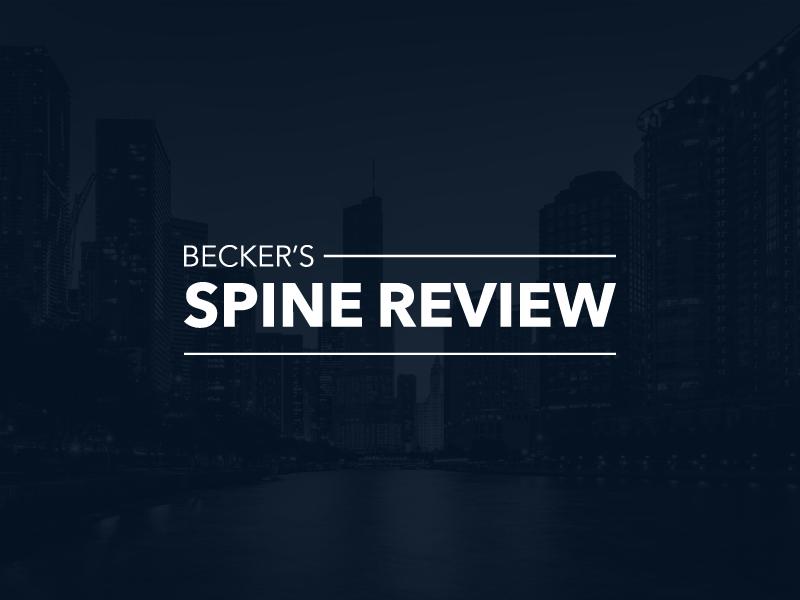When Douglas Dirschl, MD, looks at the shifting landscape of orthopedics, rather than disruption, he sees an opportunity to redefine value in musculoskeletal care.
As professor and chairman of the Joseph Barnhart Department of Orthopedic Surgery at Baylor College of Medicine in Houston, Dr. Dirschl is focused on building systems that bend with change rather than break under it.
Orthopedic trauma, he said, presents a uniquely complex test case for value-based care. Unlike joint replacement, which follows predictable pathways and standardized outcomes, fracture management varies dramatically by patient, injury and circumstance. That variability, he believes, demands a different definition of value.
“Value-based care in trauma is a bit more of a challenge than in other areas of orthopedics,” Dr. Dirschl said. “When we talk about bundled payments or risk sharing, we’re usually thinking about hip or knee replacement — surgeries that are highly common, highly protocolized and where the outcomes are straightforward. Fracture care is different. Every case is unique.”
To him, true value in trauma care isn’t measured in weeks but in years. Measuring success after 30 days, he said, doesn’t capture the reality of recovery for many fracture patients.
“We can’t measure the outcome of a fracture patient’s function at 30 days — we have to measure it at one, two or even more years,” Dr. Dirschl said. “That’s a challenge because most insurers aren’t excited about that kind of long-term outcomes assessment. When half their members turn over every two years, there’s little incentive to invest in results that take five.”
Economic and policy pressures further complicate those efforts. At Baylor, Dr. Dirschl and his team have seen firsthand how reimbursement cuts, prior-authorization rules and narrow network design limit patient access.
“Two of the fracture patients I saw recently came to us because the hospitals they were referred to wouldn’t take their marketplace insurance,” he said. “Access is a real issue. We’ve decided to stay in with all marketplace plans because people need care — but many competitors haven’t.”
He’s pragmatic about the inefficiencies that hobble American healthcare — for him, the key to maintaining value is simplicity: focusing on what matters and cutting what doesn’t.
“Prior authorizations and narrow networks are annoyances, but they’re artifacts of the system we have,” he said. “Implant costs get a lot of attention, but they’re actually a small percentage of the total cost of a fracture episode. We need to look at the whole picture and make sure every step adds value.”
Dr. Dirschl is equally candid about private equity’s growing influence in orthopedics. He’s watched its rise from the perspective of an academic leader and is not convinced the model benefits those who deliver or receive care.
“It’s difficult for me to see where those endeavors have added value for patients,” he said. “It’s also difficult to see where they’ve added value for physicians beyond those in the first or maybe second round of funding. But it’s pretty easy to see where the value has been added for the private-equity partners.”
He expects those market forces to shift again: “It’s a pendulum, as happens in healthcare all the time,” Dr. Dirschl said. “It’ll reach a point and start swinging back the other way. I just don’t know when.”
For Dr. Dirschl, leadership means preparing for that constant motion — in workforce dynamics as much as in finance. Recruiting and retaining orthopedic surgeons has become more difficult, not for a lack of talent, but because expectations are evolving.
“The hard part is finding quality people who want to be part of something larger than themselves — part of a team focused on patient care,” he said.
Academic medicine, he added, comes with its own challenges. Compensation gaps between academia and private practice persist, and younger surgeons are less willing to work the long hours that were once standard.
“Orthopedists used to work 70 or 80 hours a week,” Dr. Dirschl said. “Now it’s hard to find people who want to work like that — and I understand why.”
Another issue Dr. Dirschl’s observed is a longstanding imbalance in the geographic distribution of orthopedic surgeons. Urban centers are oversaturated, while rural communities struggle to maintain access to basic musculoskeletal care. That gap, he said, has existed for decades and shows no sign of narrowing.
“Eventually we may have too few orthopedic surgeons overall,” he said. “Market forces will correct it, but some patients will be left without quality care in the meantime.”
Looking ahead, Dr. Dirschl is thinking less about volume and more about definition — how orthopedics will define itself as technology evolves — and he worries that an overly narrow focus on surgical solutions could hamper the specialty.
“As a profession, we’ve begun to define orthopedics more and more narrowly as only those who do surgical care,” he said. “That runs the risk of losing patients completely, especially as new technologies emerge that can treat musculoskeletal disease without an operation.”
He’s also watching how hospitals position themselves within that changing landscape.
“Every hospital wants to be a trauma center, a total joint center, a cancer center, a heart surgery center,” Dr. Dirschl said. “Other countries have shown that specialized hospitals can deliver higher quality care for large populations. We’d be better served if we did more of that here.”
Through all the uncertainty, Dr. Dirschl remains steady in his belief that adaptability will separate strong organizations from stagnant ones.
“In healthcare, change is constant,” he said. “We need to create systems and teams that can be malleable.”
link

